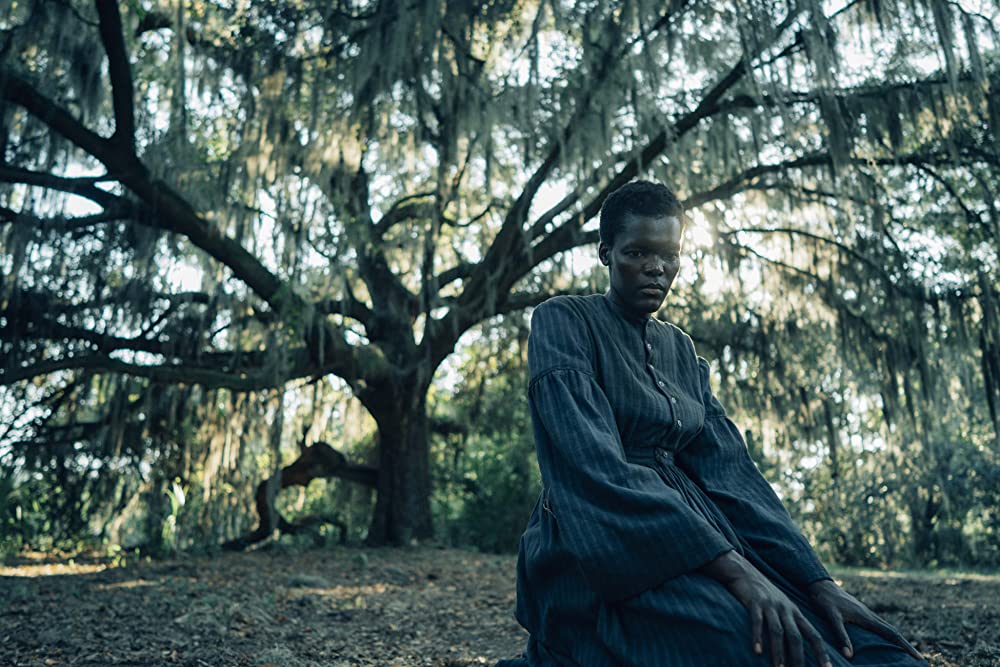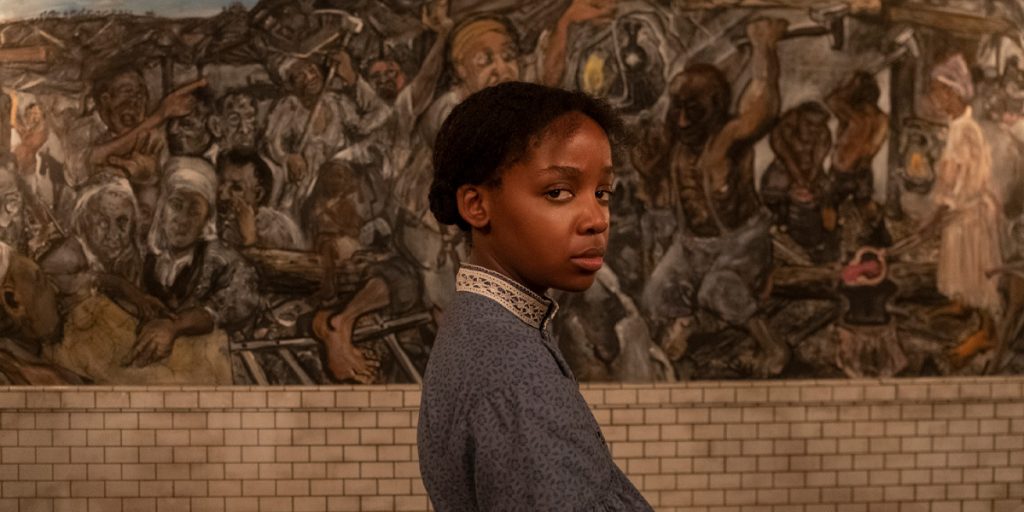Adapted from the Pulitzer-prize winning novel of the same name, The Underground Railroad is a stunning piece of television that will challenge, move and awe audiences.
For those unaware, ‘the Underground Railroad’ was the name given to a secret network of safe houses and routes that slaves used in 18th century America as a way of escape. In Colson Whitehead’s novel, adapted for the small screen by Oscar-winning filmmaker Barry Jenkins, the term is used more literally, in that the path to freedom is via an actual network of underground railway systems.
Cora (Thuso Mbedu) was born and raised enslaved on a plantation in Georgia. Having struggled with the disappearance of her mother Mabel (Sheila Atim) since she was small, and a lifetime living under utterly abhorrent conditions, she makes a daring escape with fellow slave Caeser (Aaron Pierre). As the route of escape leads up through North and South Carolina, Tennessee and Indiana, Cora is relentlessly pursued by Aaron Ridgeway (Joel Edgerton), a slave catcher who failed to capture Mabel a decade earlier, and his young Black aide Homer (Chase Dillon).
From the opening sequence, it’s clear that every second of The Underground Railroad has been exquisitely crafted. Barry Jenkins’ direction, alongside frequent collaborators James Laxton’s cinematography and Nicholas Britell’s score, results in a series that is stylistically stunning. The composition of each shot, the framing of each performance and the application of sound design enhance Jenkins’ incredible talent for giving intimate stories such cinematic scope, be they on the big or small screen. There’s barely a scene that doesn’t look beautiful, – whether it’s drenched in sunlight or warmed by candles, underpinned by a full-bodied musical soundtrack or simply the trilling of cicadas – and the meticulousness of the visual and audio structure is on display consistently from beginning to end.

As one might expect from the nature of the show’s premise, there are moments that are really upsetting. There are scenes of extreme brutality, but Jenkins takes great care not to ever present them in an exploitative manner. The trauma and pain of Black people is not used here as a means to shock, but rather with the intent of emphasising the realities of Black life at the time. In the first episode, a slave is strung up by his hands and flayed for attempting escape, whilst the White plantation owner hosts a luncheon mere feet away. It echoes one of the most evocative scenes in Steve McQueen’s 12 Years a Slave,in that it emphasises the horrendous disregard for Black lives as nothing out of the ordinary; the torture of a slave is part of the routine here. While the violence is not always as visceral and graphic as this, it is always shocking and upsetting, but Jenkins’ handling of the material is sensitive and takes care to avoid gratuitousness. It’s heart-breaking and gut-wrenching to witness, but it paints a portrait of Black history in America that, while uncomfortable to confront for most, is necessary to understand.
The show features a host of spectacular performances, chief among them being Mbedu as Cora. There’s a steel undercurrent born of hardship in Cora, and Mbedu keeps it in her eyes as Cora’s life is upended time after time. But there’s also a vulnerability that comes through in the shake of her voice, the movement of her body or a fleeting look on her face. There’s a confidence in the performance that bellies the fact that it’s her highest profile role to date, and a sure sign of exciting things to come. Edgerton as Ridgeway is one of the more interesting performances, in that it doesn’t fall into the caricature villainous white-man figure, but nor does it ever strive for redemption. Jenkins takes great care to craft every character as human, with nuance and complexity. From caring abolitionists, to ‘saviours’, to out-and-out vile racists, the show’s White characters explore the conflicting and convoluted attitudes towards race in America at the time, despite the alternate-reality setting, as well as having a relevancy in modern society. The supporting cast – that includes William Jackson Harper, Amber Gray, Damon Herriman and Peter Mullan – overflow with talent on screen, in roles big and small, that really give the show depth, stakes and a sense of realism, despite the swerve into ‘magical’ for some aspects.
The series comprises of 10 episodes in varying length that ebb and flow in terms of pace, momentum and story development. The show is consistent in its high quality, but the decision to veer off from Cora to provide an episode dedicated to Ridgeway’s childhood, as well as a coda for young runaway Grace (the terrific Mychal-Bella Bowmam), might not feel like essential viewing for some audiences. They flesh out the wider narrative world and smaller side-characters in way that does bolster the show as a whole, but their absence might have made everything feel a bit tighter and less meandering at times, without impacting the central story.
The Underground Railroad is remarkable and essential viewing. It’s tough going at times, brutal and challenging as anything dealing with its themes should be, but worth it overall and, importantly, best enjoyed with reflection time between each episode. Jenkins’ show, like Whitehead’s novel, inverts expectations and paints an allegorical, evocative picture of America. It is beautifully crafted, acted and scripted – truly some of the finest telly on offer.
The Underground Railroad is now available to watch on Prime Video.

